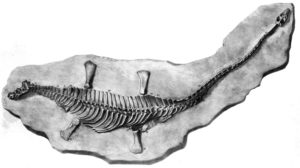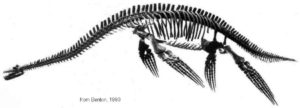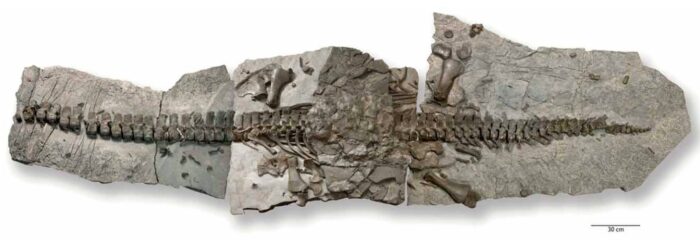Category «Plesiosauroidea»
Plesiopterys
Westphaliasaurus
Styxosaurus
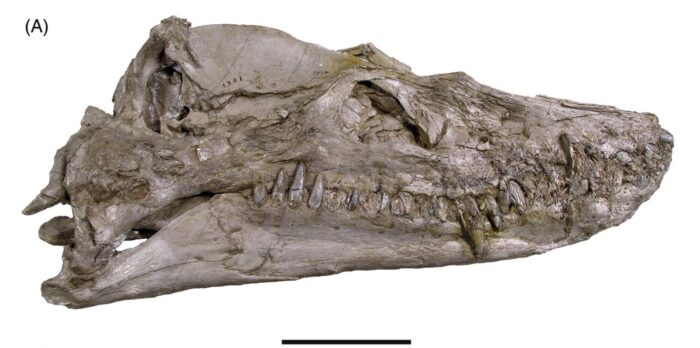
The holotype specimen (KUVP 1301) of Styxosaurus is an articulated skull and anterior portion of the neck. It was found in the Niobrara Chalk near Hell Creek, Logan County, Western Kansas in 1890. It was described later that year as a new species Cimoliosaurus snowii by Williston (1890a) (and Williston 1890b), who subsequently (Williston 1906) referred the species to Elasmosaurus.
Ogmodirus
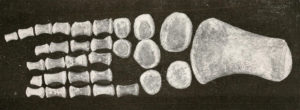
The type skeleton of ‘Ogmodirus’ was collected in 1909 by C. Boyce from the upper Greenhorn Limestone Formation (Lower Turonian, Late Cretaceous) of Cloud County (near Aurora), Kansas (Storrs 1999, Schumacher and Everhart 2005). The specimen, KUVP 441, is a partial skeleton consisting of partial vertebral column (51 cervical vertebrae, 18 caudal vertebrae), limb, and girdle elements.
Plesiosauroidea
The superfamily Plesiosauroidea is one of the two major traditional divisions of plesiosaurs, the group that typically have long necks.
Cryptoclidus in the Hunterian Museum, Glasgow, Scotland. Photo by Adam S. Smith. 2007.
The other major group (superfamily) of plesiosaurs is the Pliosauroidea (often just called pliosaurs).
Tricleidus
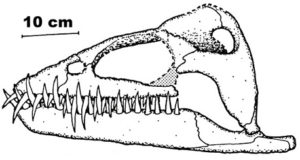
Tricleidus is a cryptoclidid from the Oxford Clay Formation of the UK. The holotype specimen (NHMUK R 3539) consists of disarticulated elements including most of skull and half the postcranium, from the Kosmoceras jasoni – Peltoceras athleta zones from the lowest deposits of the Oxford Clay Formation.

